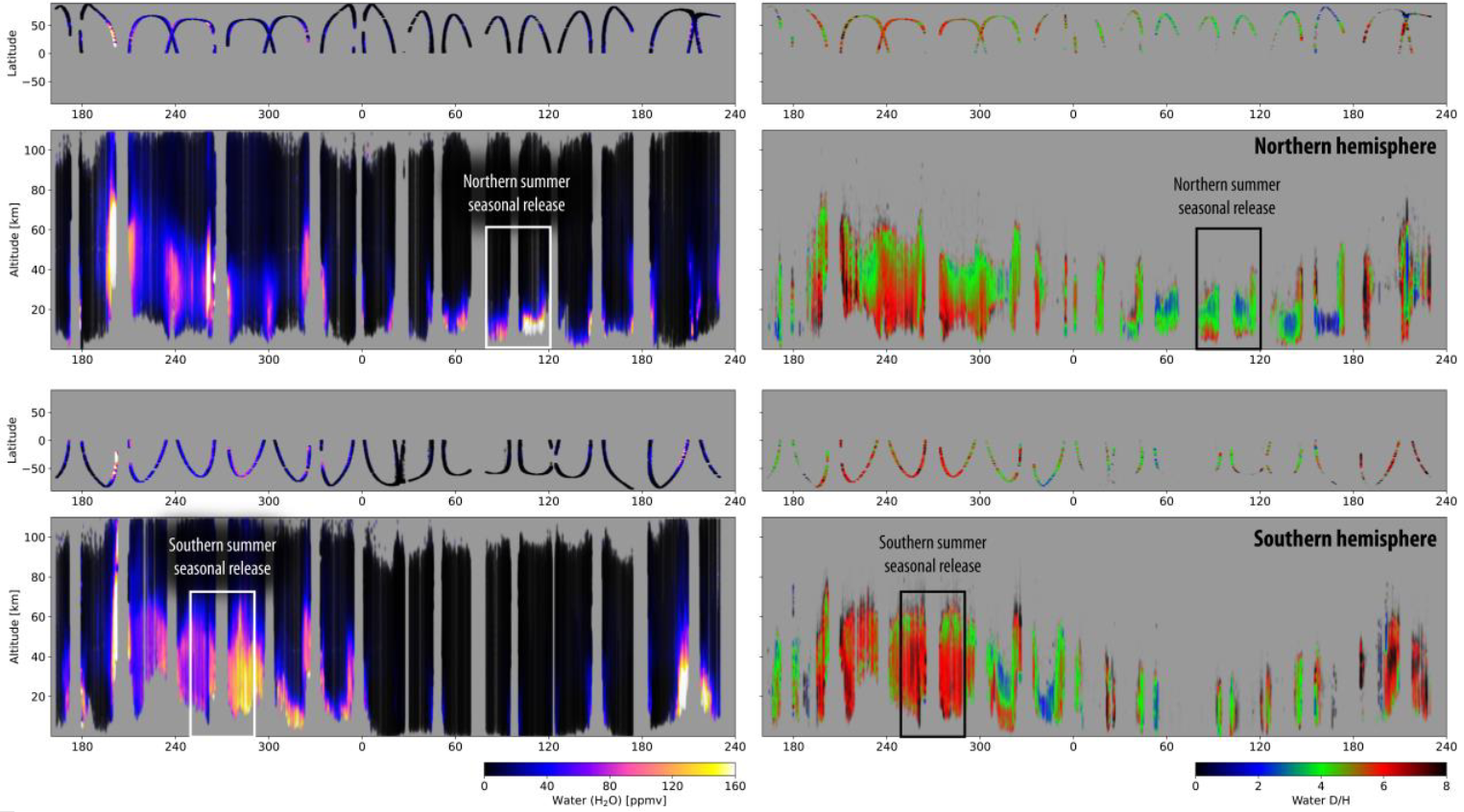GRL (2022) https://doi.org/10.1029/2022GL098161
Geronimo L. Villanueva, Giuliano Liuzzi, Shohei Aoki, Shane W. Stone, Adrian Brines, Ian R. Thomas, Miguel Angel Lopez-Valverde, Loic Trompet, Justin Erwin, Frank Daerden, Bojan Ristic, Michael D. Smith, Michael J. Mumma, Sara Faggi, Vincent Kofman, Séverine Robert, Lori Neary, Manish Patel, Giancarlo Bellucci, J.-J. Lopez-Moreno, Ann Carine Vandaele
We report vertical profiles of water and D/H for one Martian year as measured with the TGO/NOMAD instrument. The observations were performed via solar occultation, providing water profiles up to ∼100 km and D/H up to ∼60 km, with a vertical resolution of 1–2 km. The measurements reveal dramatic variability of water and D/H over short timescales and with altitude and location on the planet. We investigated the release of seasonal water from the polar caps during southern and northern summer, by mapping water and its D/H near the polar regions. Above the hygropause, the D/H drops substantially below 2 VSMOW, and both seasonal polar caps show a consistent and enriched D/H of 5–7 VSMOW within the hygrosphere.


